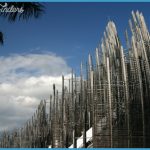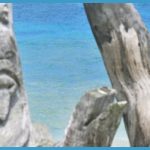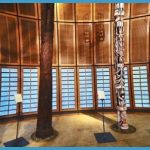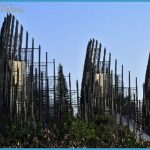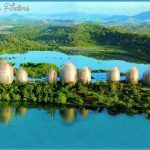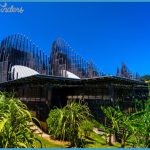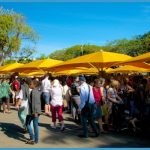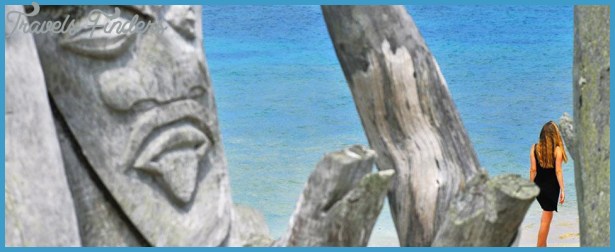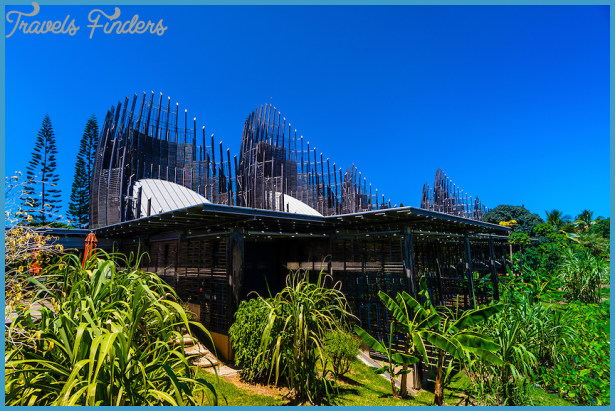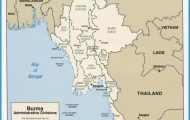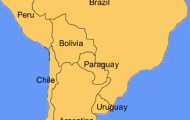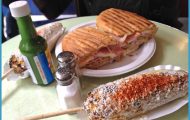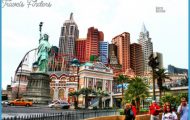RENZO PIANO
Ten tall, shell-like structures made of upright wooden staves rise up from the trees of the Tinu Peninsula on Grande Terre, the main island of New Caledonia. This arresting complex is the Jean-Marie Tjibaou Cultural Centre, which showcases the culture of the indigenous Kanak people and is named after the leader of the Kanak independence movement, Jean-Marie Tjibaou, who was assassinated in 1989.
The structures, often known by the French term, cases (huts), are the work of Italian architect Renzo Piano, who won a competition to design the Centre. By combining local building traditions with modern materials and technology, the shell-like cases harmonize with their lush surroundings and reflect the Kanak culture. They are also strong enough to withstand the challenging weather conditions in the South Pacific, especially the fierce tropical cyclones that can hit the island.
RENZO PIANO
After spending time with local people to gain a better understanding of their culture, Piano came up with a design that was sensitive to the site-three groups of podlike structures lined up in a row along a forested ridge. Each group of pods-which has adjoining rooms in the buildings behind it-has a particular function and is dominated by a tall pod reminiscent of the great house of a Kanak chief.
The first group houses exhibitions and includes an auditorium; the second contains a multimedia library and conference venue; and the third offers studios for creative artists and an education center where children can learn about Kanak art. The activities all take place in pleasant, light spaces, made comfortable by their ingenious design. Each pod has adjustable timber louvers that filter the wind and sunlight and allow air to flow through the building, keeping it cool.
Born in Genoa, Italy, Renzo Piano studied architecture in Milan before working in the office of the great American architect, Louis Kahn. In 1971 Piano established a partnership with British architect Richard Rogers. Their most famous collaboration was the Pompidou Centre in Paris (see pp.216-19), but they also produced innovative designs for other buildings, including the headquarters of the furniture firm B&B Italia at Como, Italy. In 1981 Piano set up his own practice, the Renzo Piano Building Workshop, which has offices in Paris, New York, and his native Genoa. He has worked on a wide spectrum of projects, ranging from landmark museums and galleries to major city towers, such as the Shard in London, as well as vast transport buildings, including Japan’s Kansai International Airport. He has always embraced new technologies while remaining sensitive to the settings of his buildings.
Visual tour
The administrative offices are in the single-story section of the Centre
1 BEHIND THE SHELLS Offices, the auditorium, and other rooms stretch behind the convex side of the tall, curved shells. These parts of the Centre are fairly conventional in structure, although a few are open-sided. They are flat-roofed, single-story buildings, and some of the rooms have been built underground to minimize their visual impact. The low-level buildings cannot be seen at all from some places, which means that the overall impression is dominated by the tall shells and the surrounding trees. The trees grow right next to the buildings and even inside some of the open-sided ones, helping the Centre to integrate fully with its setting.
2 PODS The walls of each pod are mainly constructed of horizontal timber louvers that stretch between the rows of upright iroko-wood ribs. These ribs, which rise above the louvers to give the building a distinctive featherlike profile, are all the same distance apart, but the spaces between the louvers vary according to their height. Some of the louvers are adjustable, and the gaps between the slats can be altered to control the flow of air through and around the building.
JEAN-MARIE TJIBAOU CULTURAL CENTRE NEW CALEDONIA
multimedia library are based in this part of the complex
IN CONTEXT
The traditional huts of the Kanak people are round and have thatched roofs. The tallest of them are the great houses, which are reserved for men of high status. These have very tall, conical roofs topped with ornately carved finials. A traditional village would have just one great house and a number of smaller huts. Although the Centre’s pods are not exact copies of traditional Kanak buildings, they resemble them in style and shape and have a similar village setting. Each group of pods in the Jean-Marie Tjibaou Cultural Centre includes one that has a tall roof and two or three with smaller ones.
1 LIBRARY The large pods house exhibition spaces, the education center, and the multimedia library (above). The library is a resource center for the study of the Kanak people and their culture. The roof sweeps down across this tall, imposing space, and a custom-built desk curves around the room, parallel to the outer shell. This shell is lined with a range of standardized units storage shelves at the bottom, with glass and wooden panels above them. Planted patios, roofed with panels of pierced aluminium, are linked to this pod, helping to make the interior of the library light and airy.
ON CONSTRUCTION
1 CLIMATE-CONTROL The adjustable louvers that line the curved surfaces of the pods are open in normal conditions so that the prevailing trade winds flow through them the angle can be altered according to the strength of the wind. The air flow can be directed toward the rooms and exhibition areas, helping to keep them comfortably cool, but these areas also have air conditioning to deal with the tropical temperatures.
1 Traditional Kanak great house
The tall, vertical ribs of the shells are made from African iroko wood, which was chosen because it is durable and resistant to termite attack. It can also be laminated, a process in which thin layers of the lumber are glued together to make them stronger.
Iroko weathers to a silvery gray color, similar to that of the galvanized steel components used to cap the ribs (to stop water penetration) and attach them to the concrete foundations, as well as in the low buildings set behind the pods. The iroko ribs are joined together by horizontal, galvanized steel tubes, and steel braces keep the pods stable in high winds. The ribs are evenly spaced apart, and Renzo Piano designed a range of different elements including louvers, fixed windows, wooden panels, and storage units to fill the spaces between them.
1 Cross section
A slice through one of the buildings shows the huge variation in height between the pod and the building behind it, but both parts are designed to blend in with the surrounding trees.

